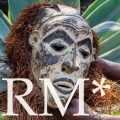Pharmaceutical magnate Sir Henry Wellcome collected medical and archaeological artifacts, estimated at approximately 1 million objects.
After Wellcome died in 1936, the Wellcome Trust dispersed his holdings.
The British Museum received the largest gift, while the Fowler Museum at the University of California at Los Angeles (UCLA) received 30,000 objects in 1965.
The remaining objects the Fowler Museum returned to the Larrakia Community on 20 May 2025 were gifts from private collectors.
Since 2021, elders from the Larrakia Community have worked closely with AIATSIS and the Fowler Museum to identify these 11 items and facilitate their return.
The timing for the return of the objects is guided by the community they originate from.
Next year, the Larrakia community plans to open a cultural center—“a place for this material to come and be cared for in accordance with Larrakia cultural protocols next year,” as Dylan Daniel-Marsh, A/g Executive Director Partnerships and Engagement Group for AIATSIS, told ARTnews.

AIATSIS has facilitated the return of more than 2,300 items back to Australia, including 20 Warumungu objects from the Fowler Museum in July 2024.
In February 2024, the Fowler Museum returned seven objects to the Asante Kingdom in the Republic of Ghana last February.
A museum’s spokesperson said that repatriation was paid for out of the museum’s own operating funds and the one to Ghana was “incredibly expensive,” due to the high cost of shipping cultural treasures.
In both domestic and international claims, the Fowler Museum is committed to following the principles expressed in the 2007 United Nations Declaration on the Rights of Indigenous Peoples (UNDRIP).


